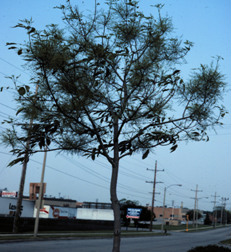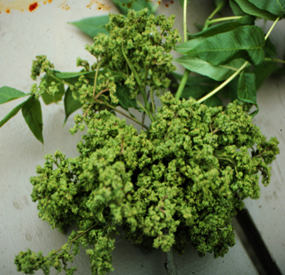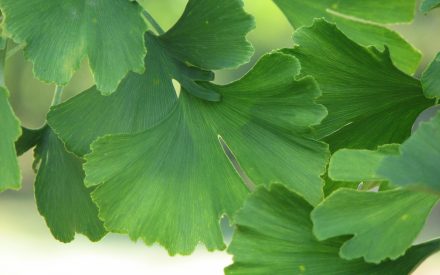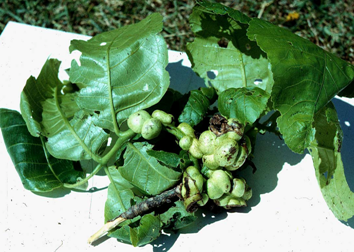
What is ash yellows?
Ash yellows is a chronic, systemic disease that affects ash trees of all ages. White ash is particularly susceptible to ash yellows. Ash yellows likely occurs wherever ash is grown and has been reported widely in the United States and southern Canada. The organism that causes ash yellows also causes a disease called lilac witches’-broom.
What does ash yellows look like?
Symptoms of ash yellows usually occur within three years of infection. Infected trees typically grow at a much slower rate than non-infected trees, although this may be difficult to detect in an isolated, single tree. The rate of growth of an infected tree may be as little as one half that of a healthy tree. Leaves on infected trees are frequently smaller, thinner and lighter green than normal. Often, but not always, affected trees will produce branches in tufts, a symptom that is called “brooming”. Eventually, branches in the crown will die and this dieback can continue until the entire crown is dead.
Where does ash yellows come from?
Ash yellows is caused by the phytoplasma, Candidatus Phytoplasma fraxini. Phytoplasmas are bacteria-like organisms that live and survive in the phloem (the food-conducting tissue) of infected plants. Leafhoppers are thought to be the primary means by which this pathogen is moved from tree to tree.
How do I save a tree with ash yellows?
There is no known cure for ash yellows, but some infected trees may live and grow slowly with the disease for many years. Ash trees suspected of having ash yellows should be tested for the disease, and those trees that test positive should be removed immediately to prevent spread of the ash yellows phytoplasma to other trees in the area. Wood harvested from infected trees does not serve as a source of the phytoplasma and can be used for woodworking or firewood, or chipped for mulch.
How do I avoid problems with ash yellows in the future?
Avoid growing ash trees in areas where ash yellows is prevalent. When choosing a lilac, select a variety of common lilac as these varieties appear to have tolerance to the ash yellows phytoplasma. Avoid using S. josikaea, S. reticulata and S. sweginzowii (or hybrids of these species with either S. komarowii or S. villosa), as these lilacs appear to be highly susceptible. It is unclear if the use of insecticides (or other means) to control leafhoppers can help control the spread of this pathogen.
For more information on ash yellows and ash yellows testing:
Contact the University of Wisconsin Plant Disease Diagnostics Clinic (PDDC) at (608) 262-2863 or pddc@wisc.edu.
Authors: Jim Olis* and Brian Hudelson, UW-Madison Plant Pathology
Last Revised: 02/28/2024
D-number: D0006
*Completed as partial fulfillment of the requirements for a BS in Plant Pathology at the University of Wisconsin Madison.
References to pesticide products in this publication are for your convenience and are not an endorsement or criticism of one product over similar products. You are responsible for using pesticides according to the manufacturer’s current label directions. Follow directions exactly to protect the environment and people from pesticide exposure. Failure to do so violates the law.
Thanks to Lis Friemoth, Ann Joy and Patti Nagai for reviewing this document.
A complete inventory of UW Plant Disease Facts is available at the University of Wisconsin-Madison Plant Disease Diagnostics Clinic website: https://pddc.wisc.edu.
Send a Plant Sample for Analysis
Be cautious when self-diagnosing plant health issues. Very few diseases can accurately be diagnosed by eye.
Contact the UW Plant Disease Diagnostics Clinic (PDDC), and for a small fee, clinic staff can examine a plant, determine the cause of the disease/disorder, and provide advice on how to control or prevent the issue.
Download Article





 Ash Flower Gall
Ash Flower Gall Ash Alternatives for Homeowners and Professionals
Ash Alternatives for Homeowners and Professionals Deciduous Tree Leaf Disease Quick Reference
Deciduous Tree Leaf Disease Quick Reference Deciduous Tree Galls
Deciduous Tree Galls


